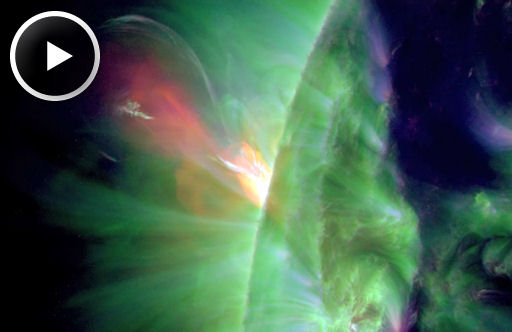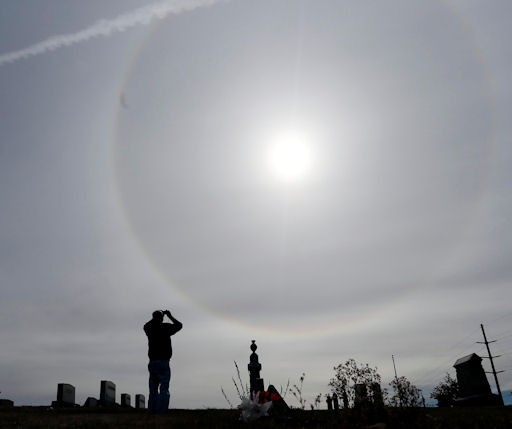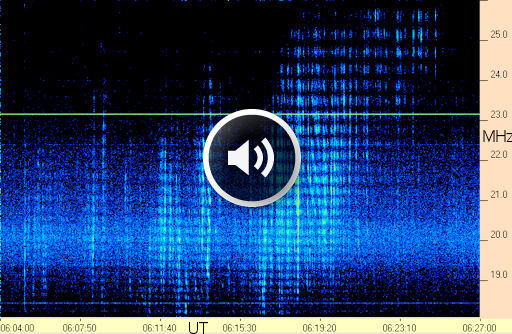Thirty-five new items have just been added to our Meteorite Jewelry collection. Browse the Space Weather Store for something out of this world. | | |
ORIONID METEOR SHOWER: Next weekend, Earth will pass through a stream of debris from Halley's Comet, source of the annual Orionid meteor shower. Forecasters expect ~25 meteors per hour when the shower peaks on Oct. 21st. [video] [full story] [NASA Chat]
LIGHTBULB ERUPTION: Sunspot AR1593, now emerging over the sun's northeastern limb, doesn't look very impressive. Yet two days ago it unleashed a very impressive eruption. NASA's Solar Dynamics Observatory recorded a glowing bulb of plasma more than 100,000 miles across on Oct. 14th:

The eruption occurred while AR1593 was still on the farside of the sun, so Earth was not in the line of fire. Next time could be different. AR1593 will spend the next ~12 days facing our planet, setting the stage for geoeffective blasts if the sunspot erupts again. Stay tuned. Solar flare alerts: text, voice.
SUN HALOS: As the northern hemisphere heads deeper into autumn, and ultimately winter, icy clouds become more commonplace. In other words, 'tis the season for sun halos. Charles Yeager photographed this specimen over Cleveland, Minnesota on Oct. 15th:

"This halo looked extremely large over the farm land of southern Minnesota," says Yeager.
In fact, it was 22 degrees in radius. That's how much hexagonal ice crystals in cirrus clouds bend the light of the sun overhead. Related crystals can also create sun pillars, sundogs, and a variety of other luminous halos. Look around the sun; you never know what you might see.
Realtime Space Weather Photo Gallery
RADIO STORM ON JUPITER: On Oct. 12th, there was a storm on Jupiter--a radio storm. Amateur radio astronomer Thomas Ashcraft recorded the event using a shortwave radio telescope located in New Mexico. Click on the dynamic spectrum (a plot of intensity vs. frequency vs. time) to hear the whooshing, crackling, popping sounds that emerged from his telescope's loudspeaker:

Dynamic spectrum courtesy of Wes Greenman, Radio Alachua Observatory
"Listen to the recording in stereo," advises Ashcraft. "I recorded the audio from two separate radios at 21.1 MHz and 20.9 MHz, so there is a stereo spatial effect from the frequency drift of the emissions."
Jupiter's radio storms are caused by natural radio lasers in the planet's magnetosphere that sweep past Earth as Jupiter rotates. Electrical currents flowing between Jupiter's upper atmosphere and the volcanic moon Io can boost these emissions to power levels easily detected by ham radio antennas on Earth. Jovian "S-bursts" and "L-bursts" mimic the sounds of woodpeckers, whales, and waves crashing on the beach. Here are a few audio samples: S-bursts, S-bursts (slowed down 128:1), L-Bursts
Now is a good time to listen to Jupiter's radio storms. The distance between Earth and Jupiter is decreasing as the giant planet approaches opposition on Dec. 3rd; the closer we come to Jupiter, the louder it gets. NASA's Radio Jove Project explains how to build your own receiver.
Realtime Aurora Photo Gallery
Realtime Noctilucent Cloud Photo Gallery
[previous years: 2003, 2004, 2005, 2006, 2007, 2008, 2009, 2011]

